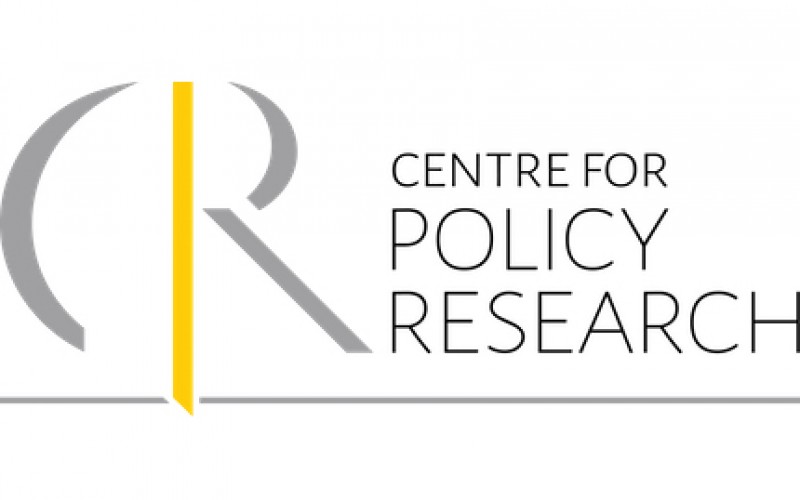The following blog post originally appeared in CPR’s Climate Initiative Blog. For details, please click here.
The final round of negotiations before the much-touted Paris climate conference kicked off today in Bonn, Germany. At issue in this round of negotiations is a text prepared by the Chairs, a “Non-paper”, that is expected to serve as the basis for negotiations on the 2015 climate agreement. In accordance with the mandate given to them, the Chairs, from the US and Algeria, produced a crisp 10-page core agreement covering the key elements of the 2015 agreement. In condensing the unreadable 86-page Geneva negotiating text into a clear and concise ten-page text, the Chairs had to exercise considerable political judgment. Unsurprisingly, there are divergent views among countries on the extent to which this judgment was judiciously exercised. Notably many developing countries have registered their strong objections to this text. From India’s perspective three issues in relation to this text are of particular concern: differentiation between developed and developing countries; parity in the treatment of mitigation, adaptation and finance; and, the design of the review mechanism. These three concerns, to varying degrees, find resonance with most developing countries.
Differentiation
This text does not operationalize, as India has long argued it should, the principle of common but differentiated responsibilities and respective capabilities that legitimizes differentiation between developed and developing countries. While there is a token reference to this principle in the agreement, most substantive provisions, including on the legal character of GHG mitigation commitments, are undifferentiated. All references to developed countries are bracketed, suggesting that any references to developed countries as a group, presumably one with enhanced obligations, are disputed. There are references to developing countries, but these are typically couched in passive voice. For instance, ‘developing countries are eligible for support’, thereby neatly avoiding the need to identify who provides such support. Or they are placed in non-actionable provisions prefaced with language such as ‘Parties recognize the importance international cooperation and support….’. Such provisions do not create obligations for Parties. At best, they reinforce shared understandings, and at worst they displace more concrete outcomes on important issues.
Perhaps even more worrisome from India’s perspective is that this text seeks to shift the line between the categories of Parties recognized in the climate regime. As reflected in this text, the principle of progression – that Parties nationally determined mitigation efforts should reflect a progression beyond previous efforts – requires those that have previously communicated economy-wide efforts to continue to do so. The category of those with previous economy-wide efforts includes countries like India and China that pledged economy-wide emissions intensity targets under the Cancun Agreements. In creating a category of parties that have undertaken ‘economy wide efforts’ rather than recognizing the category of parties that undertook economy-wide absolute emission reduction targets under the Kyoto Protocol, this text implicitly shifts the line of differentiation to include the BASIC countries, among others, into a wider ‘developed countries+’ grouping.
India will need to address the issue of differentiation head on for it speaks directly to India’s interest in creating development space for itself. India, like many other developing countries, will need flexibility and support to be an effective participant in the climate regime. The issue of differentiation also speaks to India’s interests in securing an ambitious and equitable agreement. In a world of diverse states, an ambitious agreement will have, of necessity, to embrace a robust model of differentiation that requires some to do much more than others, for in its absence there will be an inevitable leveling down of everyone’s efforts.
Parity between mitigation, adaptation and finance
The second issue of concern for India is that this text does not, as India has also long argued it should, treat mitigation, adaptation and finance on par with each other. For many developing countries, adaptation to the adverse effects of climate change is at least as important as efforts to mitigate it. In particular as current pledges to mitigate climate change are unlikely to meet the 2° C temperature goal, beyond which adverse effects are expected to be severe. Many developing countries are also keen to ensure that if their mitigation commitments are ratcheted up, so should the financial obligations of developed countries. This text leans away from such parity in treatment. It requires states to communicate and implement nationally determined mitigation contributions, but only communicate information on their adaptation actions and projected levels of public climate finance. The language used across these three sections is also revealing. While mitigation provisions are couched in actionable language (Parties shall/should… etc.), thus clearly identifying actors and actions, several adaptation and finance provisions are couched in non-actionable language (Parties recognize/acknowledge…etc.), providing considerable discretion to Parties in their implementation of these provisions. Both the adaptation and finance provisions of this text will need to be considerably strengthened to meet India’s needs.
Design of the Review Mechanism
The third issue of concern for India is that this text contains a weak review mechanism (or ‘global stock take’). Since the 2015 agreement is built on nationally determined contributions by countries (unfettered thus far by international requirements), in the absence of a strong review mechanism it will be impossible to gauge if national efforts add up to what is necessary to limit temperature increase to 2° C. It will also prove difficult to determine if states are contributing as much as they should given their responsibilities and capabilities. As currently structured, there are at least two infirmities with the design of the review mechanism. First, it is unclear if the review (or ‘stock take’) applies only to the implementation of mitigation efforts or also to adaptation and finance efforts by Parties. Many developing countries are keen that the implementation of all obligations are reviewed and not just of mitigation obligations. Only a comprehensive review will provide a full picture of implementation gaps and possibilities for remedial action. It is worth noting in this context that the text assumes that Parties’ efforts in relation to mitigation, adaptation and finance will not be updated to the same time frame, thus creating a presumption against a comprehensive periodic review. Second, it is also unclear what the outputs of the review process would be. What actions will Parties be required to take if the review indicates, as it is likely to do, that there is a shortfall in the aggregate efforts by Parties?
It is in India’s interests to strengthen the review mechanism – not just to demonstrate confidence in its ability to implement its own nationally determined contributions, but also to ensure that the international community is on track to meet the 2°C goal, and that the international community – in particular developed countries – are held to account for their implementation gaps.
Although this text, as currently structured, is not aligned with India’s negotiating positions, it is but a starting point. There is considerable scope for India to influence the drafting of this text in Bonn this week and in Paris next month. The three issues discussed are of salience to much of the G-77/China. India must use the opportunity to build a wider coalition among developing countries on these issues. India has in the recent past negotiated with the like-minded developing countries (including China, OPEC and the Bolivarian alliance countries), at times even taking issue with positions of other developing country groups, such as the Africa Group. It may be time to mend fences and find common cause with the least developed countries, Africa Group and small-island developing states, all of whom have similar concerns, in particular in relation to differentiation and finance. Once this coalition is in place, India must focus, with its developing country partners on making surgical insertions into the text to ensure its red lines are respected. The climate negotiations are poised at a critical juncture. There is a new text on the table – and, for all its infirmities, it is a text that is concise and readable, and it can, if the surgeon’s knife is skillfully wielded this week, offer a fillip in the final sprint towards Paris. India would be well advised to seize the moment, offer carefully crafted surgical insertions to balance the text this week, and thus play a decisive role in shaping the 2015 climate agreement.
The author is a Research Professor at the Centre for Policy Research, New Delhi.
1,332 total views, 1 views today







